
Sarah
There are an estimated 403,000 people living in modern slavery in the United States (GSI 2018). Sex trafficking exists throughout the country. Traffickers use violence, threats, lies, debt bondage and other forms of coercion to compel adults and children to engage in commercial sex acts against their will. The situations that sex trafficking victims face vary, many victims become romantically involved with someone who then forces them into prostitution. Others are lured with false promises of a job, and some are forced to sell sex by members of their own families. Victims of sex trafficking include both foreign nationals and US citizens, with women making up the majority of those trafficked for the purposes of commercial sexual exploitation. In 2015, the most reported venues/industries for sex trafficking included commercial-front brothels, hotel/motel-based trafficking, online advertisements with unknown locations, residential brothels, and street-based sex trafficking. Sarah grew up in California. Her cousin was the leader of a gang and its members were often guarding the house. One of the gang members abused Sarah as a child and when her cousin found out, he was forced to retaliate, and Sarah now owed him. After this incident, she became a source of income and was put to work trafficking drugs. One day, her cousin bought her new dresses, took photos of her to sell to older men. When Sarah tried to seek help at school, she was locked up for a week as punishment. Later, when she was seventeen, Sarah’s cousin was arrested and though she was free from his control, she had nowhere to go and she was soon trafficked again by an old friend into adult entertainment. When she was 23, Sarah stole her second trafficker’s car keys and escaped. After living a life of abuse, trafficking, and drug abuse, Sarah struggled to go about ‘normal life.’ She talks about her journey overcoming her trauma and moving forward.
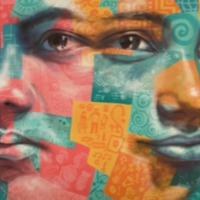
Rabi
There are an estimated 212,000 people living in modern slavery in Malaysia (GSI 2018). The majority of those exploited are migrant and undocumented workers in the country. Foreign workers constitute more than 20 percent of the Malaysian workforce and typically migrate voluntarily—often illegally—to Malaysia from Bangladesh, India, Nepal, Burma, Indonesia, the Philippines, and other Southeast Asian countries, mostly in pursuit of better economic opportunities. Some of these migrants are subjected to forced labour or debt bondage by their employers, employment agents, or informal labour recruiters when they are unable to pay the fees for recruitment and associated travel. Rabi, a Nepali worker who arrived in Malaysia in October 2007, took a loan at an annual interest rate of over 40 per cent from a private lender to pay his agent 85,000 Nepali rupees ($1,130). He expected to be able to pay back the loan within one year, based on his agent’s assurance that he would be well paid in Malaysia, but this was not the case. Rabi was not paid for his work and when he was hospitalised in November 2008 for appendicitis, a member of the church he attended paid his hospital bill.
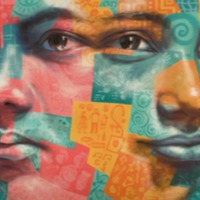
Gina R.
There are an estimated 61,000 people living in modern slavery in Saudi Arabia (GSI 2018). It is a source and destination country for men and women trafficked from South and South East Asia and Africa. People voluntarily migrate to the country to work in a variety of sectors including construction and domestic service; many of these workers are vulnerable to forced labour. Traffickers and brokers often illegally recruit migrants to work in Saudi Arabia and subsequently forced them into domestic servitude or debt bondage. Female domestic workers are particularly at risk of trafficking due to their isolation inside private residences. Non-payment or late payment of wages remains a complaint from foreign workers, while employer's withholding of worker's passports remains a significant problem. Trafficking perpetrators include businesses of all sizes, private families, recruitment companies in both Saudi Arabia and labor-sending countries and organized criminal elements. Gina R. travelled from the Philippines to Saudi Arabia for domestic work. Once she was no longer needed by one employer, she and other women workers were locked in the agency until there was further work for them, even if they wanted to return home. She attempted to escape with three other Filipinos, jumping from the third floor and injuring herself. She was taken to hospital and subsequently questioned by police.
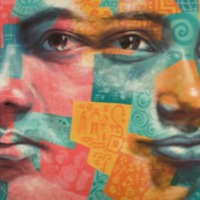
Witness A
There are an estimated 136,000 people living on conditions of modern slavery in the United Kingdom (Global Slavery Index 2018). According to the 2017 annual figures provided by the National Crime Agency, 5, 145 potential victims of modern slavery were referred through the National Referral Mechanism in 2017, of whom 2,454 were female, 2688 were male and 3 were transgender, with 41% of all referrals being children at the time of exploitation. People are subjected to slavery in the UK in the form of domestic servitude, labour exploitation, organ harvesting and sexual exploitation, with the largest number of potential victims originating from Albania, China, Vietnam and Nigeria. This data however does not consider the unknown numbers of victims that are not reported. Witness A was trafficked for commercial sexual exploitation in the UK as a minor. Witness A tells of the numerous organisations and agencies who failed to recognise that she had been trafficked, resulting in her continued exploitation. Subjected to sexual and physical violence, Witness A often found herself in contact with A&E, the police and child services who did not help her escape her exploiters and, on occasion, placed the blame upon herself. Witness A states that it was not until she reached out to the Salvation Army that she was able to escape her exploitation and was placed in a safehouse. However, Witness A talks about the lack of support available even after she was rescued from her traffickers.
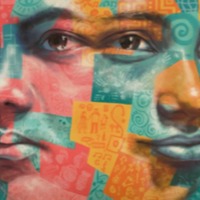
Joanna
There are an estimated 403,000 people living in modern slavery in the United States (GSI 2018). Sex trafficking exists throughout the country. Traffickers use violence, threats, lies, debt bondage and other forms of coercion to compel adults and children to engage in commercial sex acts against their will. The situations that sex trafficking victims face vary, many victims become romantically involved with someone who then forces them into prostitution. Others are lured with false promises of a job, and some are forced to sell sex by members of their own families. Victims of sex trafficking include both foreign nationals and US citizens, with women making up the majority of those trafficked for the purposes of commercial sexual exploitation. In 2015, the most reported venues/industries for sex trafficking included commercial-front brothels, hotel/motel-based trafficking, online advertisements with unknown locations, residential brothels, and street-based sex trafficking. Joanna was born in a small town in Europe/ When she was 18 she met a man who said he wanted to marry her. They began seeing each other and Joanna became pregnant. Her boyfriend took Joanna to the United States where their child was born. Unable to read, Joanna was told to sign a piece of paper at the hospital and never saw her child again. She was taken to an apartment building where other young girls like her were being kept. Joanna was forced to provide sexual services, raped multiple times a day. She was finally able to escape one day when she became ill.
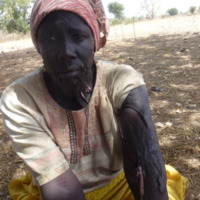
Alom Kuol Koor
There are an estimated 465,000 people living in modern slavery in Sudan (GSI 2018). Between 1983 and 2005, the central government of Sudan enslaved tens of thousands of black South Sudanese Christian and traditionalist people. It was part of a genocidal war against South Sudan, with a simple aim: to force South Sudan to become Arab and Muslim. Alom Kuol Koor was captured in 1998 and forced to walk to north Sudan. Upon arrival he was given to her ‘master’ and forced into domestic servitude. He was finally liberated in 2016 when he escaped and met with a slave retriever in a neighbouring village.
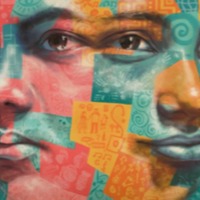
Soneeya
There are an estimated 171,000 people living in modern slavery in Nepal. Internal trafficking is significant in Nepal. Girls are trafficked internally for forced labour, sexual exploitation and forced marriage. A significant number of girls are estimated to be trafficked for sexual exploitation in Kathmandu’s entertainment sector and across the open border with India to Mumbai and other urban centres. Recent research in Kathmandu found that between 40 and 60 per cent of the females interviewed in entertainment sector workplaces (massage parlours, dance bars and cabin restaurants) were under the age of 19. Poverty is a significant driving factor for the exploitation and forced marriage of young girls in the country as although levels are declining, an estimated 10 million people live on incomes between USD1.90 and USD3.20 a day. When Soneeya was 15 years old, she was forced to marry a man 13 years older. She was subjected to physical and sexual abuse daily.
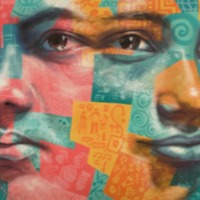
Amirta
Lebanon is a destination for Asian and African women trafficked for the purpose of domestic servitude, and for women from Easter Europe for commercial sexual exploitation. There are estimated 200,000 migrant domestic workers in Lebanon and until 2012, Lebanon was the top country of destination for female migrant workers from Nepal. Women who travel to Lebanon legally to work as household servants often find themselves in conditions of forced labour through the withholding of passports, non-payment of wages, restrictions on movement, threat and physical of sexual assault. Amirta travelled from Nepal to Lebanon for domestic work. However, she was forced to work long hours for little pay and had her food and movement restricted. Amirta was subjected to threats and physical violence that saw her admitted to the hospital.
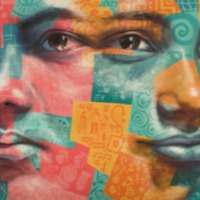
Rosa
There are an estimated 10,000 people living in conditions of modern slavery in Lebanon (GSI 2018). It is a destination for Asian and African women trafficked for the purpose of domestic servitude, and for women from Easter Europe for commercial sexual exploitation. There are estimated 200,000 migrant domestic workers in Lebanon and until 2012, Lebanon was the top country of destination for female migrant workers from Nepal. Women who travel to Lebanon legally to work as household servants often find themselves in conditions of forced labour through the withholding of passports, non-payment of wages, restrictions on movement, threat and physical of sexual assault. A Togolese former domestic worker. She received support from Caritas, which is a confederation of 165 member organizations that serve the world’s poor, vulnerable, dispossessed and marginalized. Since 1994, Caritas Lebanon has responded to the legal, social and humanitarian needs of migrant domestic workers and refugees. To date, they have provided vital support to more than 1,540,000 migrant beneficiaries.
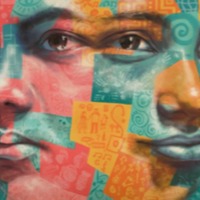
Fumi
There are an estimated 136,000 people living on conditions of modern slavery un the United Kingdom (Global Slavery Index 2018). According to the 2017 annual figures provided by the National Crime Agency, 5, 145 potential victims of modern slavery were referred through the National Referral Mechanism in 2017, of whom 2,454 were female, 2688 were male and 3 were transgender, with 41% of all referrals being children at the time of exploitation. People are subjected to slavery in the UK in the form of domestic servitude, labour exploitation, organ harvesting and sexual exploitation, with the largest number of potential victims originating from Albania, China, Vietnam and Nigeria. This data however does not consider the unknown numbers of victims that are not reported. Fumi grew up in West Africa. She went to university and studied to be a teacher. She fell in love and got married at a young age, but the man turned out to be violent and abusive. He eventually beat her so badly that she spent three days in hospital. After this experience, Fumi decided to go to the UK to start a new life as a teacher. Unable to get a visa, her mother paid a lot of money for Fumi to travel on a fake passport. However, the men who arranged her travel were traffickers, and upon arrival in the UK she was forced to work in a brothel. She was trapped there for four months.
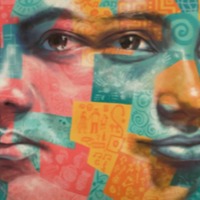
Jamie
There are an estimated 134,000 people living in modern slavery in Rwanda (GSI 2018). The country is a source for men, women and children subjected to forced labour and sex trafficking. Young girls working as domestics often have their employment terminated after becoming pregnant and subsequently become exploited in to prostitution. Moreover, Rwandan men, women and children are often trafficked to other destinations around the world including East Africa, the Middle East and China for forced labour and forced marriage. Refugees fleeing conflict and political violence in neighbouring countries remain highly vulnerable to trafficking in Rwanda. Jamie was subjected to sexual exploitation as a child after a breakdown in her parent’s marriage led to her being kept by an older man for two weeks. After being raped repeatedly by two men, she was locked in a house which caught fire. Jamie woke up in hospital disorientated and terrified.
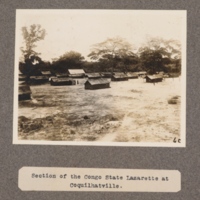
Section of the Congo State Lazarette at Coquilhatville
